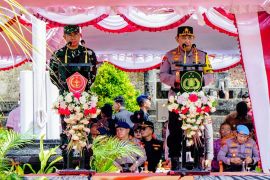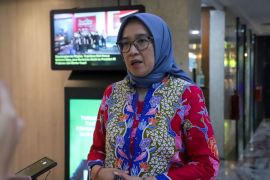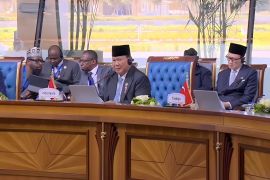Kathmandu (Antara/Xinhua-OANA) - Ramesh Subhash (12) was playing football with a volley ball with his friends at the Tudikhel military parade ground which is now Nepal\'s biggest tent camp for the homeless from last week\'s deadly quake. Hundreds of teenagers like him are now staying in makeshift tents with their families waiting for help from government and relief agencies, home and international. These children are at the forefront of the disaster, being deprived of chances to go to school, while their adult kins were also without any income sources after the economy was shut down by the quake. Thousands of the homeless from the quake or people forced to live outdoors are now living in all kinds of empty space available in the capital city, some on the road, in small gardens, parks and even construction sites. Their health is being threatened by lack of enough drinking water, food and sanitary facilities like toilets. Many of them are being supplied with instant noodles and water daily by the army and police. Because nearly half the houses in Kathmandu is in bad conditions and could collapse if another quake strikes, the capital now looks like a semi-ghost town. When evening falls, the streets are empty and an eerie feeling of quietness is penetrating into one\'s body. Police said 15,000 to 20,000 people have been spending the night in open at Tudikhel ground since the quake struck on Saturday. Health situation of these people has now become the priority of authorities and relief organizations apart from treating the injured has begun to emerge from the capital area and elsewhere. According to Nepal state news agency RSS, villagers in Khokana in Lalitpur district near the capital were suffering from an outbreak of diarrhoea. More than 100 people have received treatment for diarrhoea at a health camp of the Nepal Army and the Bangladesh Army. According Hu Weijian, a veteran Chinese disaster rescue and medical expert, the possibility of outbreak of epidemic in Nepal could not be underestimated. Hu, who came with a 60-member Chinese government medical team from Sichuan Province, told Xinhua that one of the priorities of Chinese medical team is to help the Nepal army to prevent epidemics from breaking out in the disaster struck zones. According to Onlinekhabar.com, 650 bodies were cremated at the Aryaghat, the cremation site at the Pashupati temple complex in Kathmandu. Some families are cremating the bodies of their relatives in private. The dead bodies buries under the rubbles and ruins could pose as another possible source of epidemic. As international relief and government rescue work has been getting up steam, time is running out to find the survivors. Experts say a huge task lies ahead for the government and international aid workers to help clean up the rubbles in the capital and other disaster struck zones in the country. But most importantly, the homeless people are urgently expecting support in food, medicine and shelters.(*)
Thousands of Quake Victims in Nepal Living Outdoors Colud Face Epidemic Aotbreak
Kamis, 30 April 2015 13:42 WIB










